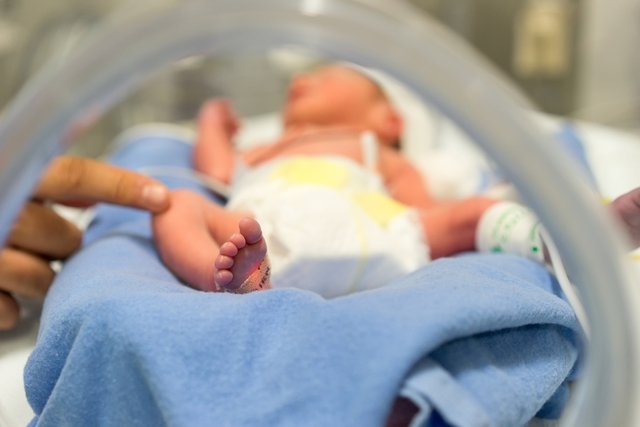Anencephaly is a birth disorder characterized by the partial absence of the brain, skullcap, cerebellum and meninges, which are important structures of the central nervous system necessary for the normal development of the baby.
As a consequence of this change, babies born with anencephaly tend to have a shorter life expectancy, which can represent hours or a few months of life. There is no specific cause of anencephaly, but it may be related to genetic and environmental factors, including a decrease in the amount of folic acid during pregnancy and the use of some medications.
Anencephaly has no treatment or cure, and it is important that the diagnosis is made during pregnancy so that the woman and her family have proper psychological support. The diagnosis of anencephaly can be made through ultrasound examination during prenatal care or through the measurement of alpha-fetoprotein in maternal serum or amniotic fluid from the 13th week of pregnancy.

Main causes of anencephaly
Anencephaly is a change that occurs due to the non-closure of the neural tube between the third and fourth week of pregnancy, that is, between days 23 and 28 of pregnancy.
The main factors that can cause anencephaly are:
- Genetics;
- Lack of folic acid during pregnancy;
- Use of some medications during pregnancy, such as valproate or methotrexate;
- Woman with insulin-dependent diabetes;
- Exposure to toxic substances, such as pesticides and heavy metals;
- Drugs abuse.
In some cases, the neural tube also presents malformation in the cervical region, resulting in spina bifida, which is characterized by incomplete formation of the spinal cord and the structures that protect it. Learn more about spina bifida.
It is important to remember that this condition is not hereditary, that is, it is not transmitted from parents to children. However, having a child with neural tube changes may increase the chances of having a baby with anencephaly.
How the diagnosis is made
The diagnosis of anencephaly can be made during prenatal care through ultrasound examination, in which the doctor can observe changes in the closure of the neural tube. In addition, alpha-fetoprotein can be measured in serum or amniotic fluid from the 13th week of pregnancy, with a high concentration of this protein.
If the diagnosis is not made during pregnancy and there has been no miscarriage, the diagnosis is made after the birth of the baby, in which the partial absence of the skullcap, brain and other structures of the nervous system is observed.
Make an appointment with the nearest obstetrician to have the baby’s development assessed and check whether there is a chance of anencephaly:
Taking care of your health has never been easier!
Difference between anencephaly, hydranencephaly and microcephaly
Hydranencephaly is a malformation where the baby does not have the right and left parts of the brain and these spaces are filled with the fluid that protects the brain and spinal cord. Many babies die before their first year of life, but in some rare cases, children with this condition live for many years.
Microcephaly is a condition where a child’s head and brain do not develop properly, being smaller than expected for their age. Depending on the degree of microcephaly, it can lead to situations such as loss of vision and hearing, and intellectual disability in the child. Understand what microcephaly is and how it is treated.
In anencephaly, the baby is born without some important parts for the development of the nervous system, such as the meninges, skull and scalp. With this condition, most babies die before birth or within a few hours or days after birth.
Consequences of anencephaly
Anencephaly can lead, in some cases, to spontaneous abortion or complications for women during childbirth. Furthermore, in the case of babies born alive, their life expectancy is very low, ranging from hours to a few months.
Furthermore, due to changes in the neural tube, it is possible for the baby to develop blindness, deafness or changes in pain perception, for example, depending on the degree of anencephaly. Therefore, it is important that babies with anencephaly are regularly monitored by the medical team so that their life expectancy can be extended.




